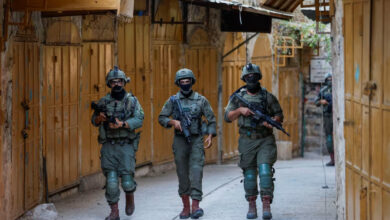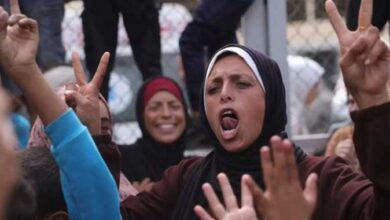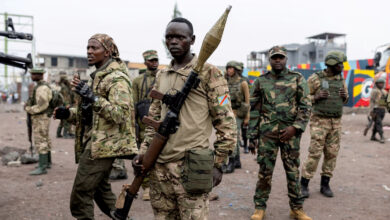With a population of just over 300,000 people, Sarajevo, the capital of Bosnia-Herzegovina, has been described by different writers as the "Jerusalem of Europe", "Damascus of the North", and Olympic City due to the wide diversity of religions in the city as well as its historical significance in the region. While walking the streets of Sarajevo however, it is easy to forget the location of this country as the sights and sounds that greet the visitor seem equally familiar in both Europe and the Middle East. Visitors can spend a week alone sampling cappuccinos at the myriad of cafes lining Ferhadija Street, a main pedestrian shopping promenade, eating cevapi (grilled meat and fried onions) in Bascarsija, and sipping Sarajevska, a local brew produced just a two minute walk south of the Miljacka River. In the evening, the visitor can slip into a tucked away cafe in the old town and smoke a shisha while listening to a mix of the latest Balkan beats and Arabic hits.
After a week on the cafe and restaurant circuit, a visitor to Sarajevo will return home well rested, satisfied and perhaps a few kilos heavier, but will have missed some of Europe’s most historically significant places along the way. To truly understand the city of Sarajevo today, I toured the city searching for the underpublicized historical places littered throughout. My pursuit, punctuated by frequent espresso breaks, of course, was well worth the effort.
The Black Hand
My first day there, walking a quiet street along the river I happened upon a small stone building, no more than four stories high directly across from the Latin Bridge in downtown Sarajevo. A small plaque adorning the side of the building read, "From this place on 28 June 1914 Gavrilo Princip assassinated the heir to the Austro-Hungarian throne Franz Ferdinand and his wife Sofia." The magnitude of the event took a moment to settle in my mind as I thought back to high school lectures on major events of the 20th century. Of course! World War I. How odd that such a modest statement adorning a nondescript building in downtown Sarajevo refers to the beginning of one of the most brutal wars of our time, a war which quickly transformed the map of Europe and the Middle East with repercussions into the present day.
The story goes back to the late days of the Ottoman Empire and the great power politics of Europe as the Austro-Hungarian Empire sought to consume the Balkans within its grasp. A group of nationalists from the secret Serbian nationalist organization the Black Hand began plans to assassinate the Archduke of the Austro-Hungarian Empire on his visit to Sarajevo. Supported by members of the Serbian military, the members of the assassination team snuck into Bosnia to begin the first stage of their plan to unite the countries of the Balkans under a pan-Slavic leadership. The day arrived on June 28, 1914 when members of the team fanned out across the parade route lining the Miljacka River, the very river on which I stood. However, nothing went according to plan that day. A carelessly thrown bomb bounced off the Archduke’s car and two members of the team failed to act. In a final desperate act, as Archduke Franz Ferdinand’s car reversed from a wrong turn, Gavrilo Princip, 19, stepped out of the crowd firing two shots which killed the Archduke and his wife Sofia.
The small building supporting the plaque is the newly renovated Museum of Sarajevo 1878-1918. Inside, the visitor can find the original gun used by Princip to assassinate Ferdinand, clothing from the Archduke and other memorabilia from this historical period. Although the museum is relatively sparse and drab, the affordable $1.50 entrance fee makes the museum worth a visit.
Sarajevo Underground
After a quick tour of the small museum, I crossed the Latin Bridge to sit at a café overlooking the water and surrounding mountains. Dozens of these small cafes line the river filled with Bosnian youth passing the time with their friends by listening to the latest ring tones on their phones while sipping strong espresso.
Nearby, the tremble of a tram indicates the departure of passengers to Lukovica Sarajevo, the main transportation hub of Republiska Srpska, a primarily Bosnian Serb political entity beginning just over the nearest hill. I arrived at the station the same morning, after a long bus ride from Belgrade, Serbia. As I rounded the hill on my way to downtown Sarajevo, I noticed a sharp contrast in the landscape. Replacing the random churches of the Serbian area, I found the horizon of Sarajevo filled with minarets and church steeples. Downtown Sarajevo is testament to a past era, in which Bosniak Muslims, Bosnian Serbs (Orthodox Christian) and Bosnian Croats (Roman Catholic) intermingled and lived in relative harmony. This changed in the late 20th century however. I wanted to explore this change further.
Crossing the river again, I turned onto Zelenih Beretki Street and signed up for a tour with the Tourist Office, a small shop just two blocks from the Latin Bridge. While waiting for the tour to begin, I read up on the history of the Bosnian War which decimated much of the country from 1992 to 1995. The conflict escalated in the late 1980s as Slobodan Milosevic, president of the Republic of Serbia, began pushing for Serbian hegemony over the region, leading to the secession of both Croatia and Bosnia from the Yugoslav Republic. The war between Bosnia and Serbian-backed forces culminated in the military siege of Sarajevo from 1992 to 1996. Desperate to survive as mortar shells rained down on the city, Sarajevan citizens took to the underground.
After a short bus ride, arranged by the Tourist Office, I arrived at the Sarajevo tunnels, which originally ran from the airport into the city. There, the tour guide delivered a fascinating narrative on the history of the tunnel, as we entered the small and damp passage through the small garden of a house. During the siege, over 20 million tons of food, one million people and an unknown amount of weapons passed through the tunnel. A museum attached to the tunnel provides further information on the history and construction of the tunnels. Open from 9am to 4pm, the tunnel tour is well worth the visit, although a bit difficult to find without a guide. The guided tour including entrance fees and transportation from the Tourist Office costs $15.
Repairing the Remains
In the evening, I returned to downtown Sarajevo and sauntered through the Old City looking for a place to eat. Catching the smell of fried onions and grilled beef, I followed my nose to an unassuming restaurant called Zeljo. Putting aside all intentions of eating healthy, I stuffed myself with cevapi, a regional dish consisting of grilled beef or lamb garnered with fried onions and placed in a pita. Certainly not for those on a diet, the $4 meal left me content and sleepy.
Waking early the next morning to the sound of children playing in the streets, I planned a day of seeking out art in the strangest of places. A quote from the British author Wyndham Lewis came to mind, discussing World War I, he said, "… the day was lost, for art, at Sarajevo. World politics stepped in, and a war was started which has not ended yet; a ‘war to end war.’ But it merely ended art. It did not end war." I sought to prove him wrong. To find beauty in the very diversity that tore the country apart.
I began my hunt looking for the mysterious "Sarajevo Rose" in the area around Ferhadija Street. Scattered randomly throughout the city, these works of art are not flowers at all, but rather the scarred concrete remains of mortar shells that rained down on Sarajevo during the Bosnian War. Following the Peace Accords in 1995, artists filled in the rose-shaped mortar scars with red resin to commemorate those who died in the siege. After an hour of wandering the streets with my eyes planted firmly on the ground, I found the prize on the ground near a large church in the downtown area. Although difficult to find, the roses are worth the hunt.
Sarajevo offers art and history buffs an assortment of museums and galleries to explore. The Ars Aevi Museum of Contemporary Art offers an interesting collection of modern art, albeit a relatively small offering. The museum bills itself as a center of dialogue and art exchange and a hub for the international art scene in southeast Europe. Not having enough time to visit all the museums, I opted to sample a few of the galleries randomly placed throughout downtown. While none of the galleries stood out as particularly innovative, I was able to acquire a superficial understanding of the Sarajevo art scene in a rather quick time.
Sarajevo’s ultimate value exists in the fusion of dichotomies: war-torn, yet beautiful; ancient, yet vibrant, and progressive, yet historical. Despite a past shredded by the tragedy of war, this Balkan capital offers a myriad of opportunities for visitors of all backgrounds and passions. After a long two days of sampling Bosnian grilled meats, touring the city’s many galleries and religious sites and crawling through the tunnels of a not-so-distant past, I grabbed my book for a leisurely evening of sipping espresso and watching a game of giant street chess played by old men in a small square off Ferhadija Street. Perhaps some tourists are wiser than I am when it comes to challenging a local in this fast-paced game of skill. Despite their canes and balding heads, those old Bosniaks play a mean game of chess – be prepared to lose gracefully




